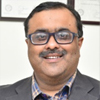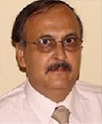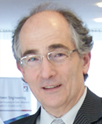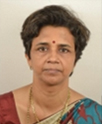DATE
04-05 December 2020

In the last 10-15 years, a significant number of electric vehicles have been deployed. In addition, a number hybrid and plug-in hybrid vehicles are being sold today. Fuel cell vehicles ...are also being gradually introduced into the market. Power electronics and electric machines are the enabling technologies for the development of electric and hybrid vehicle propulsion systems. In this seminar, the architectures of electric, hybrid (including PHEV), and fuel cell vehicle propulsion systems will be presented. The current and future strategies will be discussed. The main topics to be covered are:
Dr. Kaushik Rajashekara received his PhD degree in Electrical Engineering from Indian Institute of Science in 1984. After serving as a faculty member in IISc, in 1989 he joined Delphi division of General Motors Corporation in Indianapolis, IN, USA as a staff project engineer.... In Delphi and General Motors, he held various lead technical and managerial positions, and was a Technical Fellow and the Chief Scientist for Propulsion and Energy Systems for electric, hybrid, and fuel cell vehicles. In 2006, he joined Rolls-Royce Corporation as a Chief Technologist for More Electric architectures and power conversion/control technologies for aero, marine, defense, and energy applications. In August 2012, he joined as a Distinguished Professor of Engineering at the University of Texas at Dallas. Since September 2016, he is a Distinguished Professor of Engineering in University of Houston. Prof. Rajashekara was elected as a Member of the National Academy of Engineering in 2012 for contributions to electric power conversion systems in transportation. He was also elected as 2015 Fellow of the National Academy of Inventors and 2013 Fellow of Indian National Academy of Engineering. For his contributions to for contributions to electrification of transportation and renewable energy, he has received a number of awards including EEE Richard Harold Kaufmann award, IEEE Industry Applications Society Outstanding Achievement Award, IEEE IAS Gerald Kliman award, IEEE PELS Vehicle and Transportation Systems Achievement Award, SAE Charles M. Manly Memorial Medal, and induction into Delphi Innovation Hall of Fame. He is a Distinguished Alumnus of Indian Institute of Science, Fellow of IEEE, and a Fellow of SAE International. He has published more than 250 papers in international journals and conferences, has 35 U.S. and 15 foreign patents; and has written one book. His interests are in the area of power/energy conversion, Transportation Electrification, renewable energy, and microgrid systems.

Smart LV distribution system will have numerous low-power distributed energy resources (DERs) in form of rooftop solar PV systems, grid-tied inverters, ...etc. These DERs will be responsible for power backup, power trading with distribution grid, and local reactive power support. The characteristics of these power resources is that they will work from smaller PV installations with 1-5 kW rating or lower. This talk concentrates on the power converter topologies and control suitable for these smaller installations. Apart from discussion about conventional Voltage Source Inverters, this talk will explore alternate topologies and their control suitable for future smart LV distribution system.
Santanu K. Mishra (S’00-M’04-SM’12) received a B.Tech. degree in Electrical Engineering from the College of Engineering and Technology, Bhubaneswar, India, in 1998, an M.Tech. ...degree in Energy Systems Engineering from Indian Institute of Technology, Chennai, India, in 2000, and the Ph.D. degree from the Department of Electrical and Computer Engineering, University of Florida, Gainesville, FL, USA, in 2006. He worked as a senior application engineer with the International Rectifier Corporation in Rhode Island, USA, from 2004 to 2008. Currently, he is the Ministry of Skill Development and Entrepreneurship Chair Professor at the Indian Institute of Technology, Kanpur, India. His research interests include power converter design, implementation, control, and applications in rural scenario. He serves as an associate editor of several journals including IEEE Transactions on Industry Applications (IPCC and IACC), IEEE Transactions on Power Electronics, IEEE Consumer Electronics Magazine, IET Power Electronics, and IET Rapid Communication.

A voltage source converter (VSC), when integrated to a power system, can operate in three different modes – grid forming, grid feeding and grid supporting. The dynamic operation of a converter depends on its operating principles....
In this presentation, we shall discuss these different types of operation of VSC and their control.
Arindam Ghosh obtained his Ph.D. from University of Calgary, Canada in 1983. He joined IIT Kanpur in 1985 as an Assistant Professor and became a Professor in 1991. He was with IITK till May 2006.... From May 2006 to November 2013, he was with Queensland University of Technology, Brisbane, Australia. Currently he is a Research Academic Professor at Curtin University, Perth, Australia. His current research focus is Renewable Energy and Distributed Generation, Smart Green Grids and Power Electronics Applications to Power Systems. He was a Fulbright Scholar, a Fellow of IEEE and Indian National Academy of Engineering, IEEE PES Distinguished Lecturer and IEEE PES Nari Hingorani Custom Power Award winner.

The talk looks at two most widely used approaches for Bulk Power Transmission at High Voltages viz: HVAC and HVDC. Advent of Power Electronics with High Voltage Capability has not only ...enabled HVDC Transmission but also enabled better and stable operation of HVAC Networks through FACTS. The talk attempts at covering various techniques employed to develop large grids across continents forming regional grids beyond a single Nation. These may perhaps in future evolve into a Global Grid. One grid across the world.
Electricity is perhaps one of the greatest gifts of Science to Humanity in 19th Century. Electric Power is the third most important commodity, next to only Air and Water. Hence, a continuous and reliable power supply is very crucial to our survival and development. In fact, index of development of any country is in terms of per capita energy consumption. The highest level of transmission in Indian Sub continent is decided as 1200 kV class (HVAC) and + 800 kV HVDC.
Power Transmission began with Edison’s DC system for Street Lighting the Perl Street in New York. Invention of Transformer by Tesla revolutionized Power Transmission with ability of stepping up and down of voltages. Adoption of Synchronous Machines as Generators with Coal based Steam Turbines as prime movers and Three Phase Induction Motors as common Rugged application for all forms of Drive gave a Philip to HVAC transmission systems – levels reaching up to 1200 kV. Developments in Solid State Power Electronics and need for transmission of Power with low Rights of way, below sea, large river crossing and Asynchronous operation of AC Networks brought in HVDC Links, HVDC Bulk Power Transmitters and MTDC lines to fore front. India is proud to have the first MTDC line in the whole world at +800 kV. Developments in HVDC Power Transmission as Power Electronics Developed lead to a possible application of HVDC Technology to Power Compensation and Stability through Reactance Control or Reactive Power Control termed Flexible AC Transmission Systems FACTS.
Turn of the century in the year 2000 brought in need for looking at implementing and looking at Clean Energy Resources termed initially as Non-Conventional Energy Resources or Renewable Energy Resources as Known today. The two most widely exploited renewable energy resources are Sloar Photovoltaic Based Generation and Wind Turbine Based Generation (on Shore or Off Shore) mostly being complementary in nature – Sun being available during the day and wind during the night. Another segment that has gained prominence in use of Renewable Energy resources is Transportation Sector known to Electrical Engineers as field of Electric Vehicle (EV) technology.
With all these developments it is envisaged that large regional grids also termed Mega Grids are possible in near future. In fact Indian Grid which was five regional Grids in the year 2000 is now one with connections for import/export to neighboring countries viz: Bangladesh, Bhutan and Nepal. A submarine to Mauritius is being envisaged. Experts predict thus possibility of a Global Grid across the planet Earth.
Dr. N. K. Kishore is a Professor of Electrical Engineering(EE) and an Associate Faculty of Energy Science and Engineering with Indian Institute of Technology(IIT) Kharagpur. He holds a B.E. in EE from Osmania University Hyderabad, an M.E. in EE specializing ...in High Voltage Engineering(HVE) from Indian Institute of Science (IISc) Bangalore and a PhD also from IISc based on his thesis on Lightning Impact on Power Systems. He was a Scientific Officer (Research Projects) with IISc working in the area of Lightning Impact on Telecommunications and Aircrafts in Defense Sector from 1987-91. He was a Fulbright Nehru Academic and Professional Excellence Scholar with UMass Amherst, MA, USA in 2019-2020 in the area of Energy Studies.
He joined faculty of IIT Kharagpur in 1991. There, he teaches UGs in Electrical EE and PGs in Power & Energy Systems (PES). Also, he supervised 9 PhD / 3 M S students, and several B.Tech/M.Tech dissertations in areas of PES & Signal Processing. He has been carrying out funded research in areas of PES and applications of HVE. He developed Educational Material in the form of Video/Web on Illumination Engg. and Virtual ICT enabled HV Laboratory. He is active in training Utility Engineers from Power Utilities in areas of Distribution Technology, Power Technology, Demand Side Management to name few.
He was on the Advisory Committee on Electricity at IIT Kharagpur from 1997-2007, Chairing from 2005-2007. He published in National/ International Journals, having about 40 papers on date. He presented more than 100 papers in various national/International conferences. He organized about 6 conferences. He conducted 2 MHRD GIAN courses on applications of HVE to Medicine/Industry. He organized outreach on T10K teachers on Electric Power System. He is an FIE(India), SMIEEE and Member ESA.

Transformers are not only critical components but also very expensive power system equipment. Large number of power transformers, which have oil-paper as the insulation, have already crossed their design life,... but are still working fine. The strategy for health management of transformers is therefore of immense economic importance to power utilities all over the globe. Such strategy depends on monitoring of condition of the insulation. Condition monitoring is best performed if it is non-invasive in nature and if it could identify the ageing status of the most vulnerable insulation, viz. paper. The contaminant that damages paper insulation most is moisture. Hence, a good condition monitoring technique for transformers is the one that could estimate moisture content in paper insulation accurately, which requires a proper understanding of moisture dynamics within the transformer insulation.
The following will be discussed in the Tutorial:
Dr. Sivaji Chakravorti did his BEE, MEE and PhD from Jadavpur University, Kolkata, in 1983, 1985 and 1993, respectively. From 1985 he is a full-time faculty member of Electrical Engineering Department... of Jadavpur University, where he is currently Professor in Electrical Engineering. From August 2015 to August 2020, he was the Director of National Institute of Technology Calicut on lien from Jadavpur University. He worked at the Technical University Munich as Humboldt Research Fellow in 1995-96, 1999 and 2007, respectively. He served as Development Engineer in Siemens AG in Berlin in 1998. He has also worked as Humboldt Research Fellow in ABB Corporate Research at Ladenburg, Germany, in 2002. He worked as US-NSF guest scientist at the Virginia Tech, USA, in 2003 and as guest scientist at Technical University Hamburg-Harburg, Germany, in 2005. He is the recipient of Technical University Munich Ambassador Award in 2013 and AICTE Technology Day Award in 2003. He is Fellow of Indian National Academy of Engineering, Fellow of National Academy of Sciences India and Distinguished Lecturer of IEEE Power and Energy Society. He was Chairman of IEEE India Council during 2017-2018 and Associate Editor of IEEE Transactions on Dielectrics & Electrical Insulation during 2014-2018. He has published more than 200 research papers including 66 papers in IEEE Transactions, authored three books, edited three books, developed three online courses and owns one US patent, two Indian patents and two software copyrights. His current fields of interest are condition monitoring of power equipment, numerical field computation and optimization of insulation system.


Over the last 50 years, the branch of high-voltage (HV) engineering called “electrostatic processes” has provided the foundation for extraordinary, new industrial developments measured in billions of U.S. dollars. All these processes make use... of the forces that may be generated in a high-intensity electric field. The range of applications extends from electrostatic painting to the separation of granular mixtures in the recycling industry, and from air filtration to waste water treatment [1, 2]. Electrostatic techniques serve also to remove unwanted electric charge and prevent the related hazards [3].
This presentation is aimed to introducing to the HV scientists and engineers attending this tutorial some of the electrostatic processes developed by our research team at the PPRIME Institute, on the campus of the University Institute of Technology in Angoulême. With more than 600 scientists, doctoral students, engineers and technical staff, PPRIME Institute is the largest research unit of the French National Center for Scientific Research in the field of physical sciences for engineers. The PPRIME’s research team directly involved in the present study has a world-wide-recognized expertise in electrostatic processes, as demonstrated by hundreds of scientific publications, more than 40 PhD theses, tens of industrial partnerships and two patents active in most of the countries in the world.
The use of high-intensity electric fields for sorting the constituents of granular mixtures is the class of electrostatic processes on which most of our investigations have been focused. In our talk, we will introduce the principle of operation of these devices and give some hints on the HV experimental techniques that we are currently using. After a brief presentation of the main applications of the electrostatic separation in the recycling industry, we will expose in more detail the techniques that are specific to the treatment of waste electric and electronic equipment.
To illustrate the diversity of high-intensity electric fields applications, we will also describe the use of: (1) AC HV for the generation of dielectric barrier discharges for the depollution of water and the modification of the tribological characteristics of polymers; (2) DC HV to produce corona discharges for the precipitation of dust in industrial effluents and for improving the performances of electret filters.
In the end, we will discuss the perspectives of expending the range of industrial applications of the HV engineering techniques designated as “electrostatic processes”.
Lucian Dascalescu received the graduate degree (with first class Hons.) from the Faculty of Electrical Engineering, Technical University of Cluj-Napoca, Cluj-Napoca, Romania, in1978, the Dr. Eng. degree from the Polytechnic Institute of Bucharest, Romania, in 1991,... and the Dr. Sci. degree in 1994, and then, the “Habilitation à Diriger de Recherches” Diplomain physics both from the University “Joseph Fourier, Grenoble, France. His professional career began with CUG (Heavy Equipment Works), Cluj-Napoca. In 1983, he moved to the Technical University of Cluj-Napoca, as an Assistant Professor, later becoming an Associate Professor of electrical engineering. From 1991 to 1992, he received a Research Fellowship at the Laboratory of Electrostatics and Dielectric Materials, Grenoble, where here turned in1994, after one year as an Invited Research Associate and Lecturer with Toyohashi University of Technology, Japan, and three months as a Visiting Scientist with the University of Poitiers, France. For four years, he taught a course in electromechanical conversion of energy with the University Institute of Technology, Grenoble. In 1997, he was appointed as a Professor of electrical engineering with the University Institute of Technology, Angouleme, France. He is the author of several textbooks in the field of electrical engineering and ionized gases. He holds 16 patents, has written more than 260 papers, supervised more than 40 Ph.D. theses, is a member of the editorial board of several scientific journals and international conferences, and was invited to lecture on the electrostatics of granular materials at various universities and international conferences all over the world. Prof. Dascalescu was the Chair of the Electrostatics Processes Committee, and the Vice Chair of the IEEE France Section. He is a member of the French Society of Electrostatics and Club Electrotechnique, Electronique, Automatique, France. He has been awarded the title of Doctor Honoris Causa of the Technical University of Cluj-Napoca, University of Pitesti and “Politehnica” University of Bucharest, Romania.
Thami Zeghloul was born in Casablanca, Morocco, on December 25, 1962. He received the M.S. degree in mechanical engineering from the Fundamental and Applied Sciences Faculty and the Ph.D. degree with a thesis on the stick-slip phenomena between solids from the University of Poitiers, Angouleme, France, in 1987 and 1991, respectively. During his doctoral studies, he started teaching mathematics and physics, at first to high school pupils, and then to university students, as a Teaching Assistant. From 1991 to 1995, he was an Associate Researcher with the University Institute of Technology, Angouleme, University of Poitiers, where since 1995, he has been an Assistant Professor, and then, an Associate Professor. From 2001 to 2007, he was the Head of the Quality, Industrial Logistics, and Organization Department. An elected Director of the University Institute of Technology, in 2007, he stood for the creation of an expertise center dedicated to ecodesign, to train students, and to favor the transfer of sustainable technologies to small- and medium-sized businesses. Since September 2010, he has also been the Manager of a technological platform dedicated to image and sound industry, sponsored by the University Institute of Technology, and the local authorities. He is a Researcher with the PPRIME Institute, CNRS–University of Poitiers–ENSMA. He is the author of more than 60 papers on dry contacts and lubrication problems. He currently supervises several Ph.D. theses in the field of tribo electrostatics.

Bhabha Atomic Research Centre is a Multi disciplinary Institute wherein almost all branches of science and engineering are nurtured for front line research and development activities.... There are interlinked fundamental and applied investigations to develop the system for Nuclear, Medical, Industrial and agricultural applications. These technologies are also transferred to other interested industries in a very transparent manner. This talk will illustrate the significant accomplishment of BARC and domain of research areas. Details of the R&D being pursued towards electron beam accelerators and utilization for agricultural applications, plasma based systems for environment friendly waste management. Highlights of the compact high power pulsed technology for X-rays, microwaves, neutron, shock wave and nanopowder generation etc. will be presented. Glimpse of Electron beam welding, melting and laser based instrumentation will also be given. Salient feature of the talk is that all these technologies have been indigenously developed, deployed successfully for in-house applications and made available as import substitute too.
Dr.Archana Sharma, Outstanding Scientist, Associate Director, Beam Technology Development Group, Bhabha Atomic Research Center, Mumbai. Her working domain encompasses High Voltage... Pulsed Power technology, Indigenous electron beam accelerators, high power microwaves, Flash X-rays, electro-pusle welding, laser and plasma based systems for various applications. She is also recognized Ph.D. guide for Homi Bhabha National Institute (HBNI) and Mumbai University. She is recipient of Homi Bhabha Science & technology Excellence Award and many group achievement awards. She has been recognized as fellows of INAE,IEI and IET(UK). Current efforts are to make developed indigenous system reliable and cost effective for effective deployment of R&D from lab to land.

Partial Discharges (PD) are in general a consequence of local electrical stress concentrations in the insulation or on the surface of the insulation. If it remains undetected, then catastrophic failure may happen leading to severe financial... losses as well as outage of power supply. It is important to understand the subtle differences between Partial Discharge and Corona Discharge. This talk will highlight how the Dielectric Strength of a Gas vis-à-vis Pressure plays an important role in PD phenomenon and hence what are the sources of PD. The goals of PD measurement will be discussed with a focus on the physical effects of PD. PD detection through electrical measurement based on IEC 60270 and thereafter non-invasive measurement of PD based on ultra high frequency and acoustic sensors will be explained in details. Major quantities related to partial discharge pulses and display of PD pulses will be outlined. PD Pattern Analysis in GIS along with Trending of PD Pattern will be taken up as case studies. For on-service PD detection by UHF technique, particularly for transformers, OEM installation as well as retrofit installation of sensors will be explained. Time of Flight measurement from UHF sensors will be presented as case study. Finally, locating PD by means of acoustic measurements will be touched upon.
Dr. Sivaji Chakravorti did his BEE, MEE and PhD from Jadavpur University, Kolkata, in 1983, 1985 and 1993, respectively. From 1985 he is a full-time faculty member of Electrical Engineering Department... of Jadavpur University, where he is currently Professor in Electrical Engineering. From August 2015 to August 2020, he was the Director of National Institute of Technology Calicut on lien from Jadavpur University. He worked at the Technical University Munich as Humboldt Research Fellow in 1995-96, 1999 and 2007, respectively. He served as Development Engineer in Siemens AG in Berlin in 1998. He has also worked as Humboldt Research Fellow in ABB Corporate Research at Ladenburg, Germany, in 2002. He worked as US-NSF guest scientist at the Virginia Tech, USA, in 2003 and as guest scientist at Technical University Hamburg-Harburg, Germany, in 2005. He is the recipient of Technical University Munich Ambassador Award in 2013 and AICTE Technology Day Award in 2003. He is Fellow of Indian National Academy of Engineering, Fellow of National Academy of Sciences India and Distinguished Lecturer of IEEE Power and Energy Society. He was Chairman of IEEE India Council during 2017-2018 and Associate Editor of IEEE Transactions on Dielectrics & Electrical Insulation during 2014-2018. He has published more than 200 research papers including 66 papers in IEEE Transactions, authored three books, edited three books, developed three online courses and owns one US patent, two Indian patents and two software copyrights. His current fields of interest are condition monitoring of power equipment, numerical field computation and optimization of insulation system.
04-05 December 2020
IIT Bhubaneswar, Argul
